Cataract Surgery

Cataracts are the leading cause of vision loss in adults 55 years of age and older. A cataract is a clouding of the eye’s natural lens. This lens is located behind the iris and works just like the lens of a camera. Light images are focused on the retina, which sends images to the brain. The lens can become so clouded it prevents light and images from reaching the brain.
A cataract can be the reason sharp objects become blurred, bright objects become dull and seeing at night becomes difficult. It may also be why reading glasses or bifocals that previously helped are no longer effective. Vision with cataracts has been described as seeing life through old, cloudy film. However, a cataract is not a film over the eye and neither diet nor laser treatments will make it disappear.

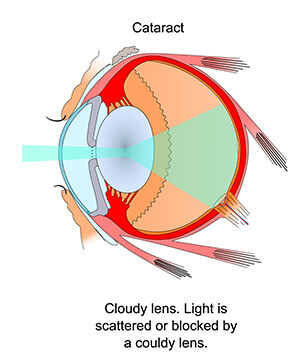
While eye trauma, certain diseases or some medications may cause clouding, the majority of cataracts are simply a result of the natural aging process. The best way to treat cataracts is with surgery that removes the clouded lens and replaces it with a new, artificial lens. This quick and relatively simple procedure can restore vision and significantly improve the quality of life. The advancement of multifocal and accommodative intraocular lenses now makes it possible for cataract patients to no longer require glasses following the procedure.
Explanation Of Cataract Surgery Procedure
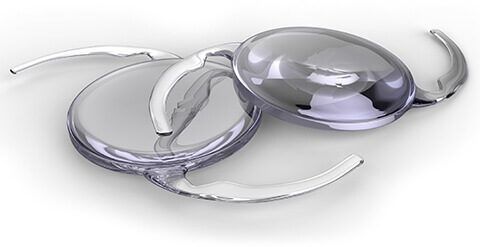
Cataract surgery is one of the safest and most effective surgical procedures. Each year more than 3 million cataract surgeries are performed in the United States.
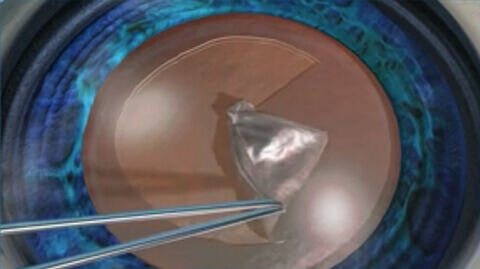
Standard Cataract Surgery
Standard cataract surgery involves removal of the patient’s natural lens of the eye and replacing it with an artificial lens. This is accomplished by making an incision in the cornea manually, breaking up the old, cloudy lens, removing the lens, and properly placing a replacement lens. This is performed using traditional instruments and blades.
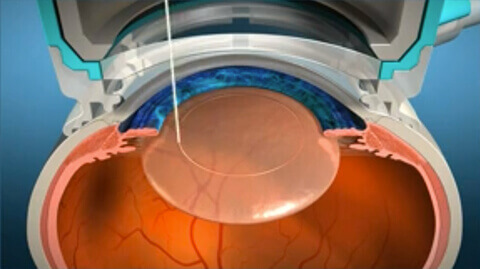
Laser-Assisted Cataract Surgery
A tremendous innovation to cataract removal has been the femtosecond laser. The LenSx laser allows Dr. Paveloff to perform the entire procedure without blades.
THREE Significant Advantages of Laser Cataract Surgery Are:
More Gentle Surgery
Less energy is used in laser cataract surgery and this lower amount of energy protects the eye’s internal structure. Thus, the risk of damage to the capsular bag which supports the new lens implant is greatly reduced.
More Accurate Outcomes
The lens implant is better centered and less likely to shift during the healing process. This results in a better quality of vision.
Astigmatism Correction
The LenSx laser creates precise incisions to help treat low levels of astigmatism. This leads to more accurate vision correction.
Laser Cataract Surgery vs. Standard Cataract

Dr. Paveloff is one of the first cataract surgeons in Santa Barbara to perform Laser Assisted Cataract Surgery with the Alcon LenSx laser.
The LenSx laser provides cataract patients with computer-controlled precision as it automates some of the most challenging steps of refractive cataract surgery. The laser replaces the traditional hand-held blade to optimize all incisions for enhanced, reproducible surgical performance. This technological breakthrough provides Dr. Paveloff with real-time, three dimensional visualization for true customization of your cataract procedure.
Advanced Lens Options
Previously the goal of cataract surgery was to restore distance vision with a monofocal lens. Typically, the patient would require reading glasses following the procedure. With the FDA approved multifocal and accommodative lenses, our goal is to enhance your full range of vision, minimizing or even eliminating your dependence on glasses, including reading glasses and bifocals.
PanOptix

Dr. Paveloff was the first cataract surgeon in Santa Barbara to offer the new PanOptix Trifocal Intraocular Lens. The PanOptix Lens delivers an exceptional combination of near, intermediate and distance vision and substantially reduces the need for glasses. PanOptix is already one of the leading presbyopia-correcting IOLs in more than 70 countries. It is designed for today’s active lifestyles; from viewing mobile devices and computer screens to high quality distance vision in a wide range of lighting conditions.
AcrySof™ IQ Vivity
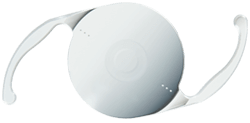
The AcrySof™ IQ Vivity™ IOLs are artificial lenses implanted in the eye of adult patients to correct vision after having the lens removed due to a cataract. Cataracts are often the result of aging, but can have other causes. This approval expands the use to improve how well you are able to see during activities that take place:
- At an arm’s length distance such as working on a computer, applying makeup, or shaving (intermediate vision), and
- At close range, such as reading, writing, and sewing (near vision)
- How does it work?
The AcrySof™ IQ Vivity™ IOLs work by bending light rays to allow those to focus on the retina (the back surface of the eye) to correct blurry distance vision that would result from removing a cataract and not replacing it with an artificial lens. The lenses also provide improved intermediate and near vision compared to a standard intraocular lens implant.
Symfony Lenses

The Symfony lens is the first lens to be approved by the FDA with the designation “extended range of focus” intraocular lens. While the lens implant looks like a multifocal lens, the optics work differently. Instead of producing two distinct focal points, the lens can achieve excellent clarity at distance and a range of clear vision at near for patients receiving the lens. The arrival of the Symfony lens is welcomed news because many patients who were not good candidates for a multifocal lens may, in fact, be very good Symfony candidates. One specific group of patients consists of cataract patients with significant astigmatism.
Our expectations for Symfony patients are that they should be able to pass a driver’s test, navigate their cell phone, perform most computer tasks, and read their Kindle without the need for glasses. A multifocal lens can be considered a bit stronger than the Symfony with regards to its ability to provide newspaper or paperback book reading vision to implanted patients. While complete spectacle independence is often our goal with our refractive cataract surgery patients, we are, of course, unable to guarantee any specific outcome. Like multifocal lens patients, patients undergoing Symfony lens implantation need to understand that they may see some halos/rings around lights when driving at night. Fortunately, the incidence of persistent and troublesome night vision disturbances is uncommon.
Patients contemplating cataract or refractive lens exchange surgery can be evaluated for their candidacy for the Symfony lens or other refractive techniques.
AcrySof® ReSTOR® IOL
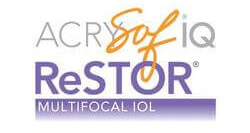
Until recently, life without reading glasses or bifocals was not an option for cataract patients because traditional monofocal intraocular lenses (IOLs) could only improve distance vision. The development of the ReSTOR multifocal lens allows patients to see near, far, and everywhere in-between. The lens is designed to correct cataracts for patients with or without presbyopia (lack of reading vision).
Most patients find they can read a book, work on the computer, and drive a car – day or night – with an increased freedom from glasses. In clinical studies, 4 out of 5 patients who received the ReSTOR lens in both eyes reported never having to wear glasses.
ReStor® Frequently Asked Questions
Crystalens HD™
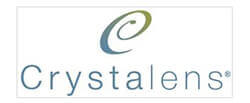
Originally approved by the FDA in 2003, the Crystalens HD can effectively treat cataracts and presbyopia (loss of reading vision) by replacing the eye’s natural lens with an accommodating lens. This amazing new lens is designed with tiny hinges that allow the implant to move forward and backward, accommodating in response to the eye’s focusing muscles. The Crystalens provides an increased depth of focus which is designed to improve near vision without compromising intermediate or distance vision.
Frequently Asked Questions About The Crystalens HD™
AcrySof iQ Toric Lens
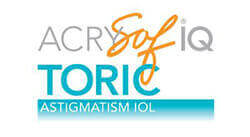
The AcrySof Toric Lens received FDA approval in 2005 and is proven to correct for cataracts and astigmatism simultaneously. Implanted in the eye to restore single-distance vision following cataract surgery, the AcrySof Toric Lens has a unique design that provides both spherical and astigmatic correction.
This lens offers the following advantages over traditional lens implants:
- Correction of corneal astigmatism
- Enhanced quality of uncorrected distance vision
- Filters potentially damaging UV or blue light
- Ability to see rich, vibrant colors
- The AcrySof Toric Lens is an excellent choice for people who drive at night often. This lens delivers great clarity with minimal reports of glare and halos under bright or dimly lit conditions. Likewise, this particular lens is ideal for patients who require distance correction, yet are comfortable wearing glasses for near and intermediate task.
Paveloff Vision Center offers a wide range of financing options. Click here to learn more!

